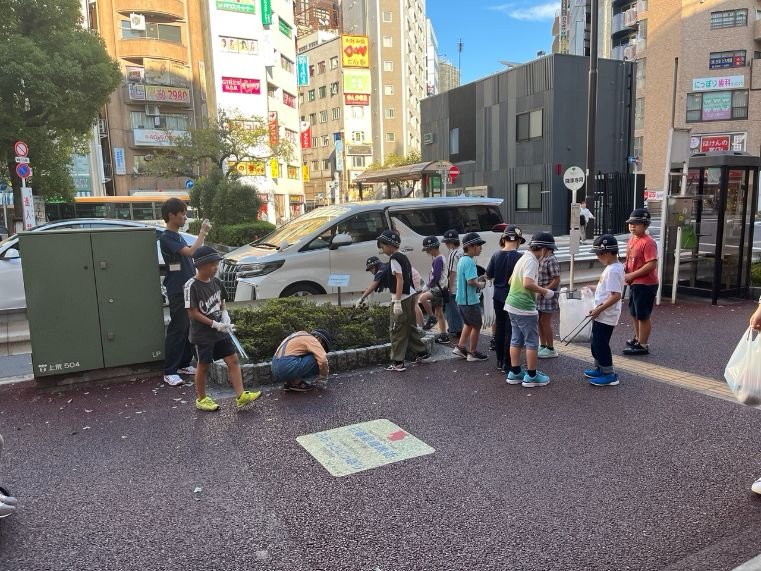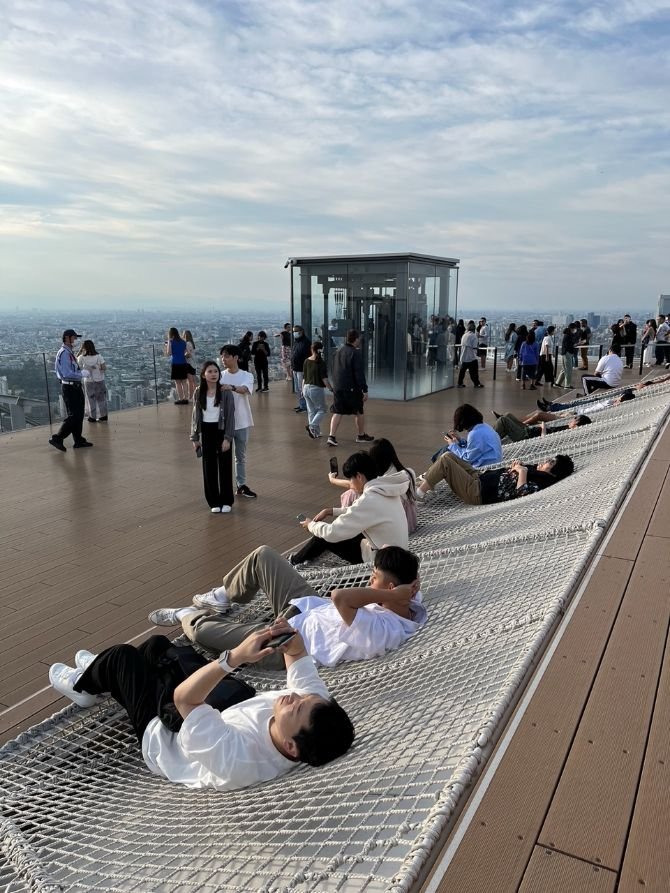Lessons From Tokyo: The 3D City
“It feels like I have traveled with and met at least 1MM people during this past 7 days in Tokyo. Thought I would share with you some statistics from the Tokyo Metro. Although I have been lost in the underground subway system a few times, I have never encountered any delays/problems. Also no sign of crime or safety issues. What’s is North America doing wrong???”
“It is amazing that in our week here we have not heard a car honk its horn and only a few sirens from emergency vehicles. I wondered if the cars sold in Japan came without horns.”
”Also, the police and mailmen use bikes here. There are cars but they all go the speed limit and at crosswalks cars wait until everyone is across before proceeding. At crosswalks when the no walk light goes on pedestrians wait and the cars go.”
After getting several email like these from my friend Richard Brekke I asked him if he’d like to do a guest blog and he agreed.
While Tokyo streets may look chaotic to many North Americans, everything operates efficiently and pleasantly for RB, an engineer. The grey building is an 8 floor discount department store.
The 3D City
The first thing that struck me when I arrived in Tokyo was that it is a 3D city. Most North American cities sprawl out over large areas and have a few skyscrapers making them 2D cities. We’re used to finding stores and restaurants at street level. In Tokyo be prepared to look up, down and all around when you’re hunting for an address.
Most department stores, shopping malls, subway stations and office buildings have several interconnected levels below ground as well as 5 to 50 floors above ground. As a tourist, it’s easy to get disoriented. In one case I spent over 1/2 hour searching for a Japanese baseball team store using Google Maps and never found it.
Another thing you’ll notice as you explore Tokyo is that it’s a clean and modern city.
Note how the vertical signage indicates the floor locations of various retailers.
Clean Safe & Quiet
The city has its historic sites and beautiful parks but they are intermixed with modern buildings. To keep Tokyo clean, safe and quiet they rely on Japanese culture. The city provides few public trash bins yet there is no littering. Stores don’t sell chewing gum. Smokers congregate in outdoor designated smoking areas. Policemen ride bicycles. At street intersections pedestrians cross when the signs say to, there are no horns honking or cars running red lights. People are polite and respectful.
The greater metro Tokyo has a population of 37 million people (divided into 23 wards) almost the same population as Canada. The best way to travel around is by using public transit. All subway stations have “fare adjustment” staff who are helpful in explaining how to navigate the system. They also don’t let you leave the station until you have paid the correct fare.
Link: Tokyo has the world’s best transit system
Note: If you are interested in a long-stay in Tokyo you might want to consider The TEFL Academy and becoming a English teacher so you can not only earn some money but meet locals.
I would describe their subway system as a bowl of spaghetti. (Challenge: Can you find the circular Yamanote subway line?)
As a starting point for planning your trips use the circular Yamanote subway line which has major stations within walking distance of most tourist attractions. You’ll be shocked that even though the subways are crowded they are quiet. People queue up to board the subway trains and during the trip they whisper or don’t talk at all.
Recess time includes picking up garbage for Japanese children
Tokyo Police Stations are small and inviting, with an open door policy. Link: Tokyo is the 10th Safest City to travel to.
Outdoor designated smoking areas along the sidewalks.
In the Ginza ward cars wait patiently for pedestrians to cross - NO honking! The building on the right is the Mitsukoshi, Tokyo’s iconic department store.
Inside Mitsukoshi one of the world’s great department stores.
Love The Food
Torched tuna
During the week I spent in Tokyo I fell in love with Japanese food.
I tried sushi, ramen, yakitori (chicken skewers), karaage (fried chicken), onigiri (filled rice balls), tonkatsu (panko breaded pork cutlets), sukiyaki (beef slices cooked in sake) and shabu shabu (beef cooked in broth).
Most restaurants have English menus, pictures, or fake food displays at their entrance. A word of caution, the Japanese use the whole animal when cooking. A flavourful beef ramen, contained tripe which was inedible. You must be careful.
Who doesn’t like to shop? Stores in Tokyo are jam-packed with merchandise you have never seen before. Even their product packaging is unique. I saw crackers in packages shaped like fish and bottled water in the shape of a bullet train.
Uniqlo’s flagship store (Japan’s Gap) has 8 floors of clothing including a floor that is just anime-printed t-shirts. Japanese department stores rival Macy’s, Harrods and Selfridges.
The typical layout of a Tokyo department store has a basement food/deli floor, a main floor with high-end luxury shops, between 5-10 floors of miscellaneous shopping and is topped off with at least 1 floor full of restaurants. Tokyo Hands (8 floors), the Loft (7 floors) and Mega Don Quijote (8 floors) are discount stores on steroids.
LOFT restaurant floor directory.
LOFT restaurant menu directory
Too Much To See & Do
I spent a week exploring Tokyo but there are just too many attractions to see. In the Shinjuku ward, I saw a larger-than-life 3D cat that hissed and jumped at you from the top of a building. I visited the Shibuya Sky which is a 360 degree open air observation deck located on the 46 floor of a skyscraper.
One corner of the observation deck has a lounge to enjoy a cocktail while another corner overlooks the busy Shibuya pedestrian crossing. Tokyo has several other places to view the beautiful city skyline, the Tokyo Skytree, the Tokyo Tower and the Park Hyatt Hotel.
Note: Using an eSIM Japan made getting around the city much easier since I always had data for maps and train schedules.
Sensoji Temple, oldest Buddest Temple in Japan
Nakamis-Dori is a shopping street (outdoor mall, market) leading to Senoji Temple.
Ueno Park Map
Another memorable place I visited was Ueno Park which opened in 1873.
The park is located at a subway station and contains a zoo (they have pandas), six museums, the Toshogu Shrine and the Shinobazu Pond. It is famous for its cherry blossoms in the spring.
The combination of so many things make it a real "gathering place" but surprisingly it didn’t seem crowded.
Shibuya Sky (observation deck, cocktail lounge and fun places to sit and enjoy the Tokyo skyline).
Shinjuku 3D Cat
Shunobazu lotus ponds surrounded by the city
Uniquo Anime T-shirt floor
Best Washrooms
Tokyo washrooms and toilets are amazing. The Japanese have figured out that not only do people need places to eat and drink but they need to go to the toilet too.
Toilets are everywhere; at the subway stations, at all the tourist sites, on every department store floor, and in restaurants and bars.
The typical Japanese toilet has so many controls you wonder which button to push first.
Do you want the seat warmed, do want some white noise, do you want a squirt here or there and finally do you want a full or half flush.
Every washroom was ultra clean and I never saw a sign that said “Public access not allowed.”
Last Word
Last but not least I would like to share four travel apps (WISE, MAPS, TRANSLATE, UBER) for your smartphone that made my trip to Tokyo and back easy. WISE is a debit card that allows you to have multiple foreign currency accounts and make low cost currency exchanges. To navigate a new city like Tokyo and a foreign alphabet like Japanese MAPS and TRANSLATE were essential. I arrived back in Calgary during a recent snowstorm and found no taxis at the airport UBER saved the day.
Underground shopping floor at the Yamanote Tokyo subway station looks a lot like Calgary’s +15 walkway.



















